I’ve heard the same complaint over and over about Connie Vogelmann’s Wyrmspan – a game posed to me by so many as “Wingspan, but with dragons”. It’s not, by the way, but we’ll get to that in a moment. The real issue is that apparently there’s not enough competition in Wyrmspan. And I see it – I do.
Player interaction is definitely down against Wingspan, its acclaimed predecessor by Elizabeth Hargrave. But there’s something a lot of people are missing as they swing their swords in protest, claiming that a game about dragons should be all about conquering your foes and hoarding gold. (Granted, it is a little bit about the latter.)
As a game designer, storyteller, and purveyor of the best board games, I’m here to unearth something far deeper and more important than scratching the itch for a good scrap between pals in a dragon game. Because Wyrmspan is not just a dragon game, it’s a game about extreme caving.
A solo endeavor
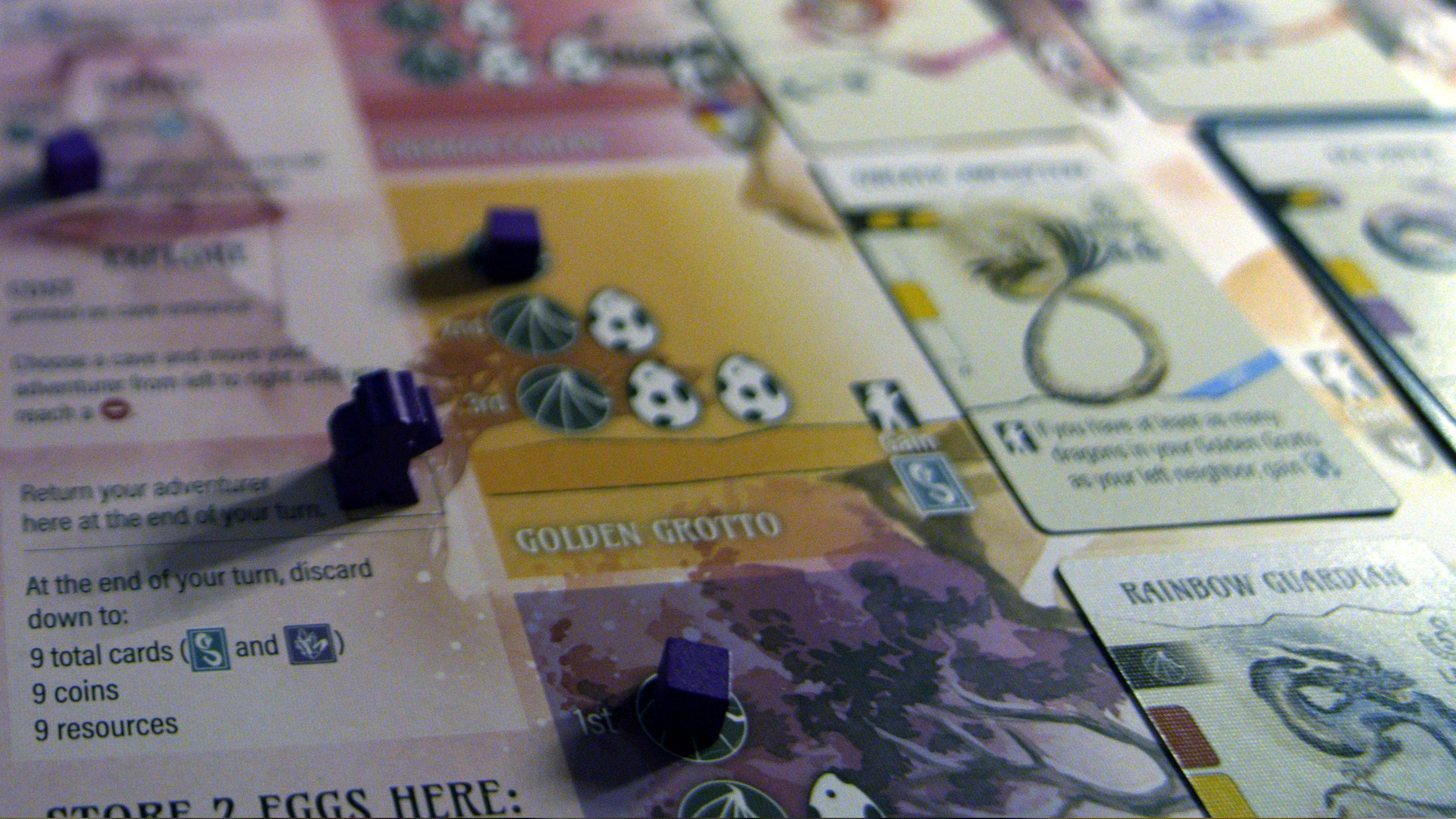
Samantha pretty much nailed my initial sentiment in our Wyrmspan review. It’s a game that “Ramps up the complexity, but not the interactivity” against its predecessor. And although I’ve changed my mind about that being a negative thing, it still rings true. So what’s the difference between Wingspan and Wyrmspan?
In Wyrmspan, you entice the dragons in your hand of cards into caves on your player board using resources, similarly to how you would entice birds into habitats in Wingspan. You build a system with the dragons that will net you bonuses when you eventually get to the exploration part of the game. The better the system, the more exciting the cave exploration.
Thanks to the omission of what Wingspan called The Bird Feeder – which saw players competing for a random, limited selection of resources – there are far fewer interactions between players that can mess up each other’s strategy. Other than scooping up cards from the display before your opponent, the Birdfeeder was the main source of ‘take that’ action. Granted, Wyrmspan still presents you with a selection of common round goals that can give you an edge against your opponents, but there’s little reason to keep an eye on your opponent’s next move.
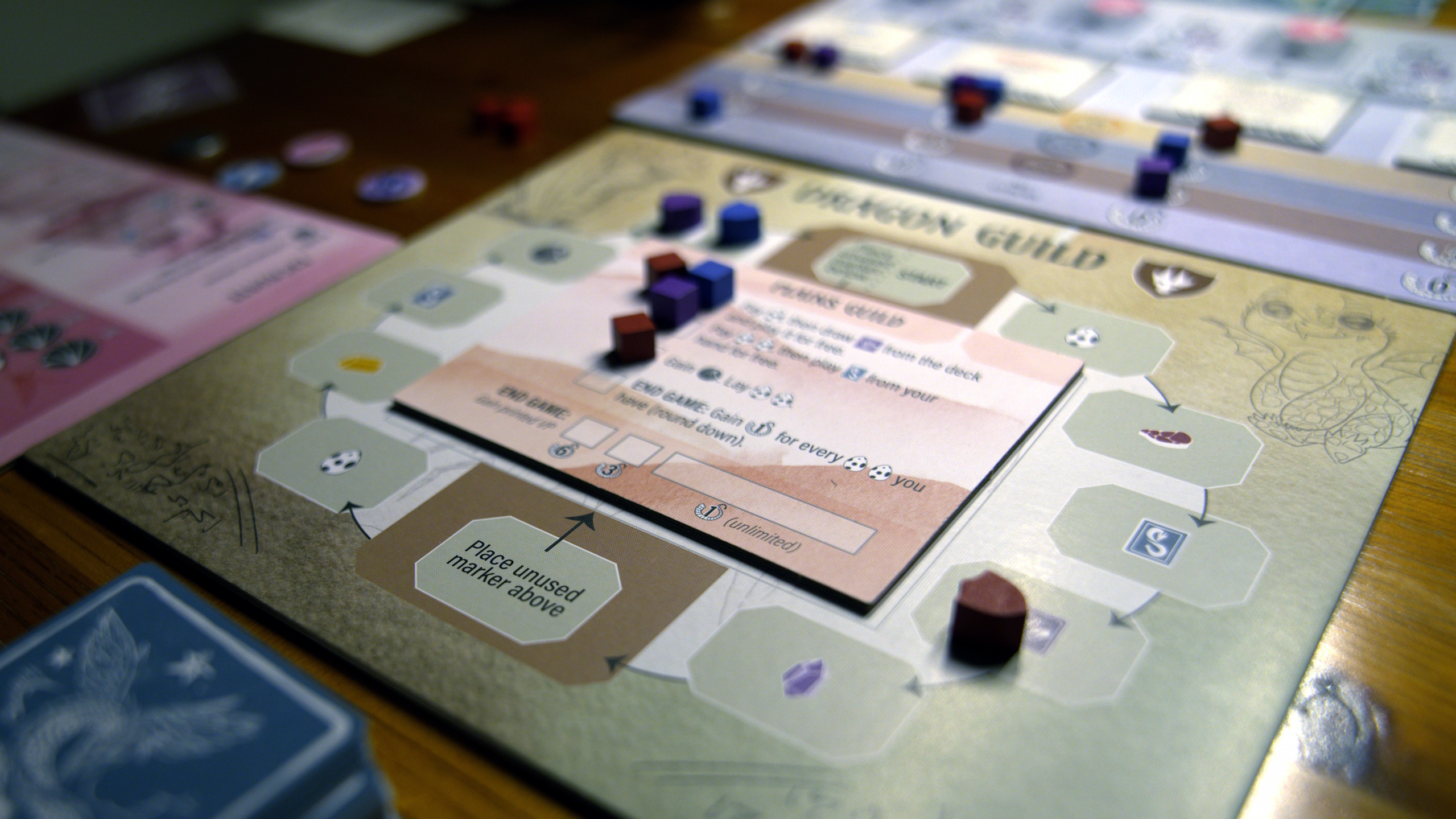
In an attempt to curb this, the guild board was added – a circular track with small rewards, that lead you to extra-good reward spaces with limited spots. Get there first and you could end up with an immense boon. And while you’ll check it periodically to see if you’re in the running, it’s still not enough to keep you invested in what your opponents are up to – something that’s impossible to predict, in any case.
Our Samantha says Wyrmspan “feels like playing solitaire with other people at the table,” which I’m not sure is a fair assessment. It’s far more complicated than solitaire and certainly a step up from Wingspan, which isn’t exactly a beginner’s game.
Before any dragons move in, you’ve got to excavate caves for them to live in – another layer of complexity that keeps you honed in on your own strategy. On top of that, there’s the guild to consider. As well, the introduction of coins to pay for moves gives Wyrmspan a whole internal economy to think about over Wingspan’s simple Action Cube system. With action cubes you know you’ll have one less action per round and that’s that. The coins not only add complexity, but an element of uncertainty thanks to an even greater mass of potential tactics
Choke point
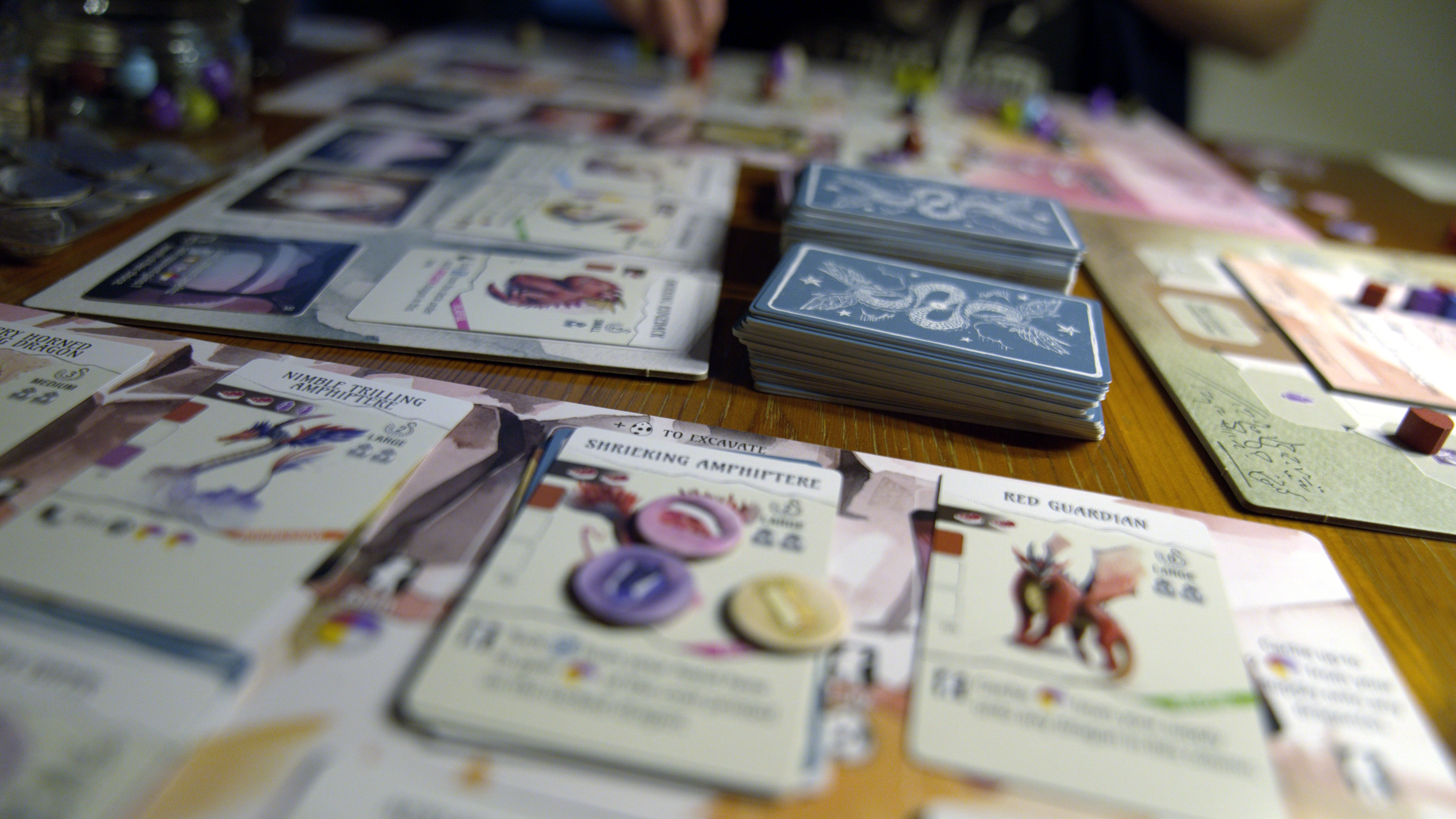
With so many mechanics and goals demanding your attention, Wyrmspan can start to feel overwhelming, particularly in the late game where any move could spell failure. But that’s where its true nugget of brilliance lies – that feeling of being caught up in choice paralysis. It’s something cavers experience all the time, and it marries the mechanics perfectly to the theme.
Spelunking, or potholing for the UK cavers among us, is dangerous. It requires heaps of planning even before you set foot in the cave mouth: How deep are we going to venture? Do we have enough food? What are our goals here? And once you’re inside you have to be hyper-aware of your foot placement, your status, your oxygen levels… You’re often squeezing through tight gaps, feeling trapped and with not a soul in earshot, let alone eyeline.
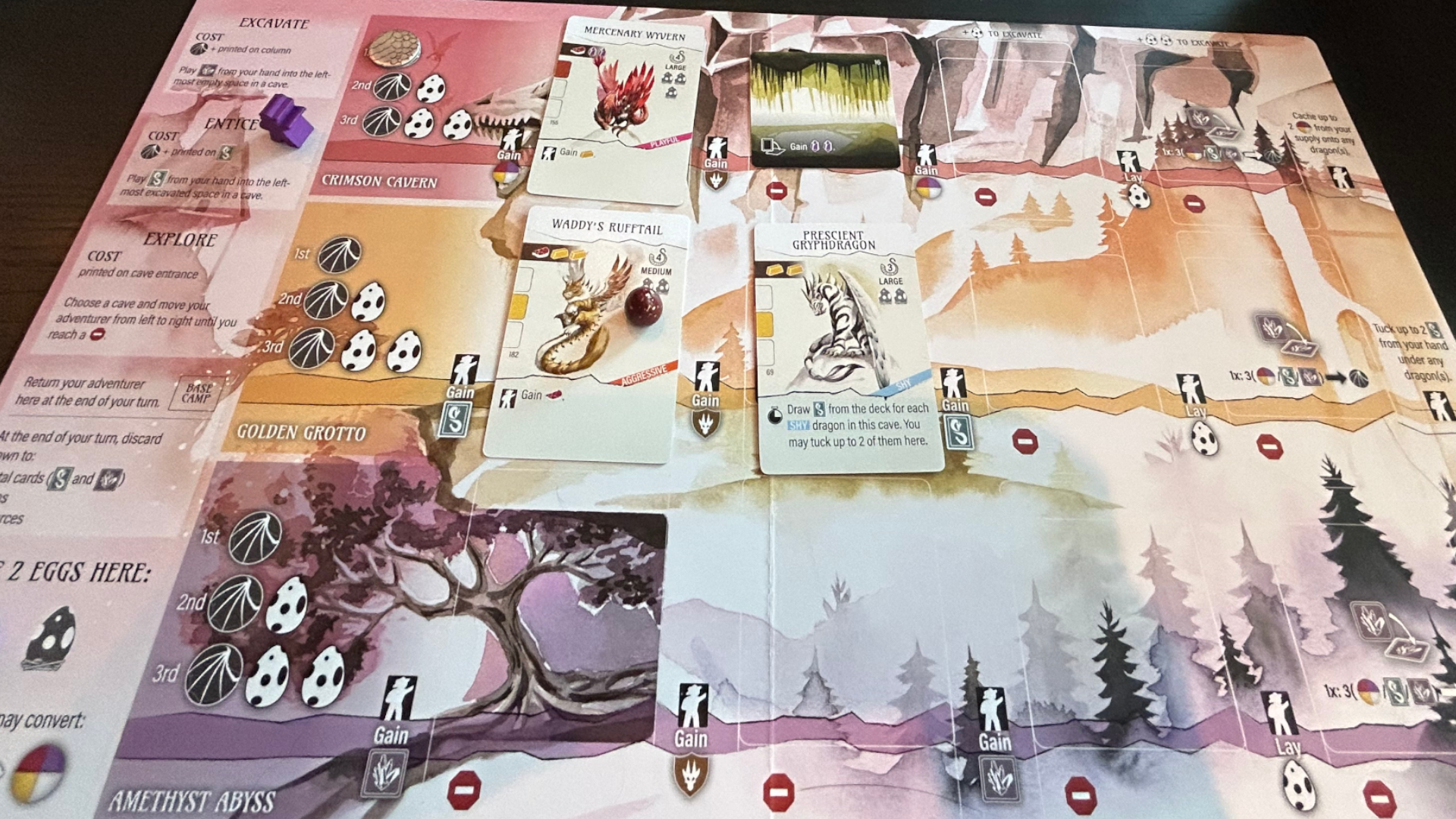
In Wyrmspan, the action hinges on these tense moments of personal progression, where there are countless ways to squeeze your way into real trouble, and very few ways to get it right. This tension boils to a point until you finally take an action that sees everything fall together, where you strike gold, and make one great push to the surface to share your stories of success.
It’s this emulation that Wyrmspan aces, the claustrophobia of extreme cave exploration, that makes it such a brilliantly cohesive game. One that takes an intense hobby and distills it in board game form, and adds some dragons for dressing.
Wyrmspan doesn’t let people’s need for a game about dragons to revolve around a contest. It rips you from the clenching jaws of would-be competition and sets you clambering into an entirely different challenge, one of trepidation, isolation and wonderment.
For more recommendations, why not check out essential board games for adults and the best cooperative board games for an alternate take.
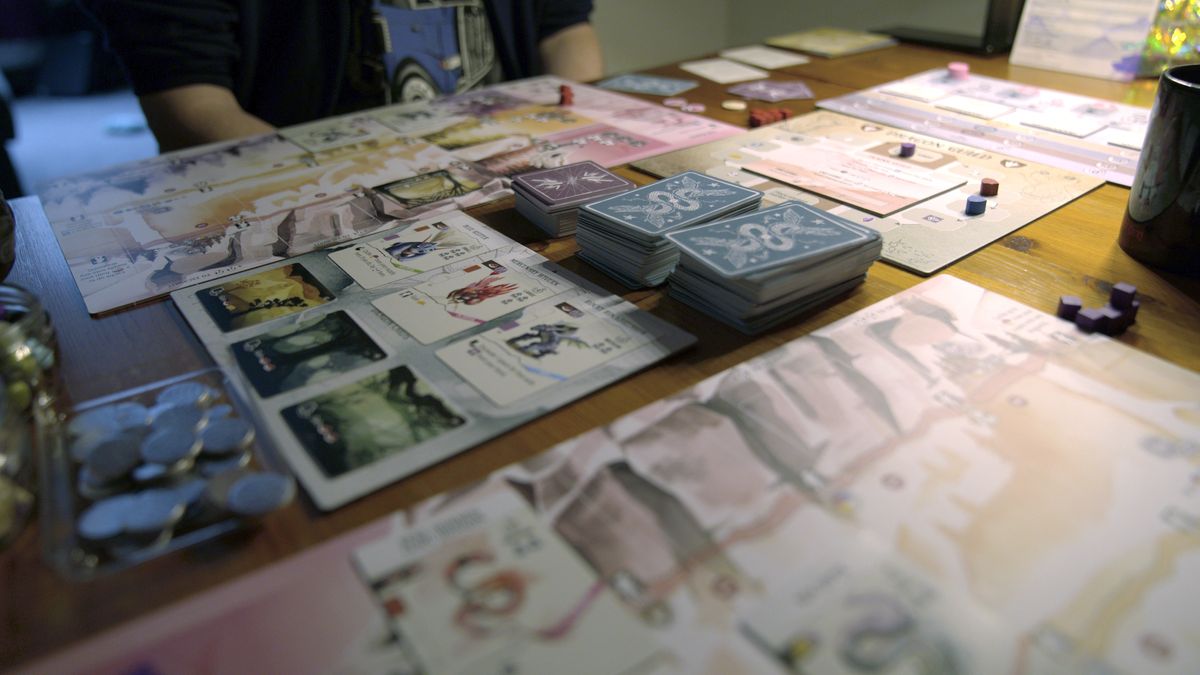







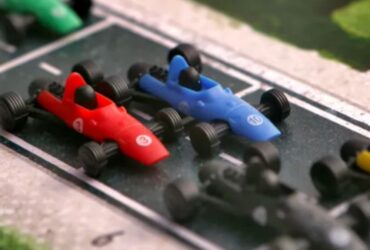
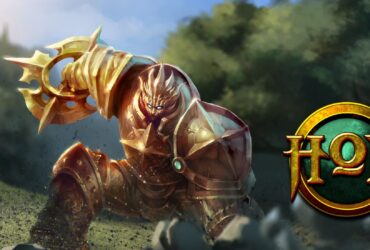


Leave a Reply